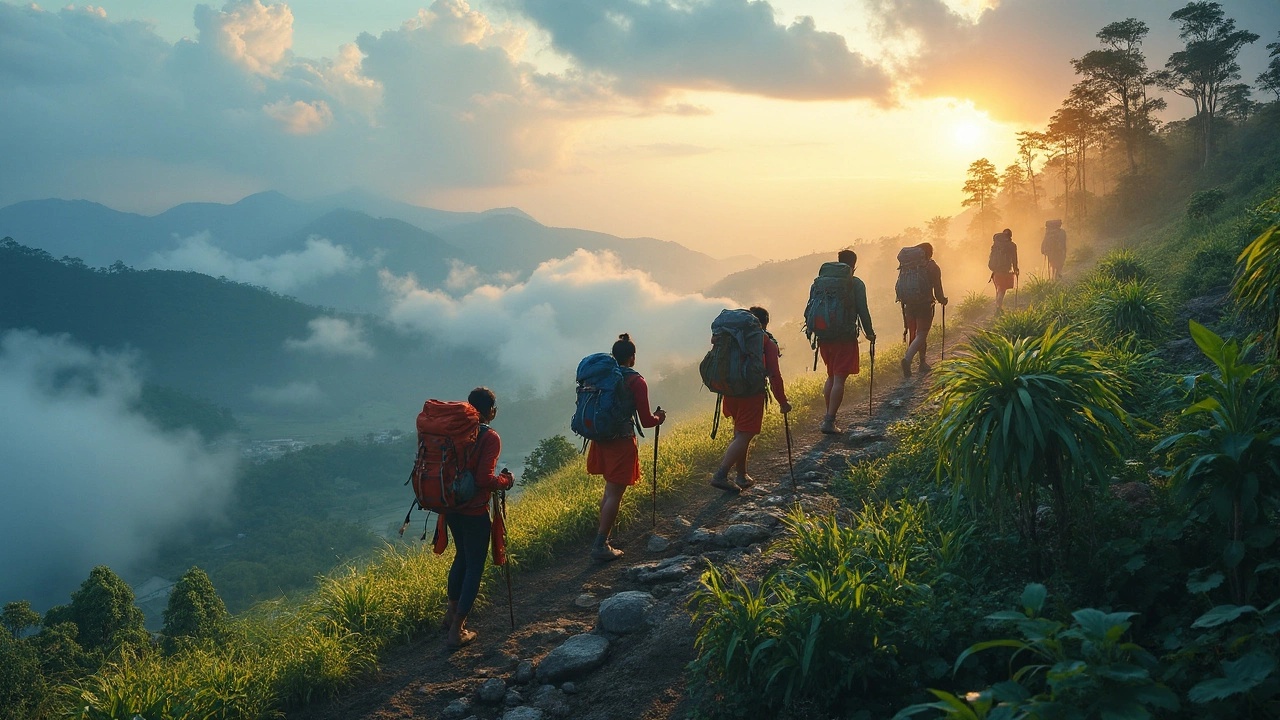SEARCH
What Trekking Can Do for Your Health
If you’ve ever felt the burn in your legs after a long walk, you already know trekking is a solid workout. But the benefits go far beyond sore calves. In plain terms, trekking strengthens muscles, lifts mood, and keeps the heart ticking smoothly. The good news? You don’t need a gym membership or fancy gear – just a trail, some shoes, and a bit of time.
Physical Perks of Trekking
First off, trekking is a full‑body workout. Your legs do most of the work, but your core engages to keep you steady on uneven ground. Over time you’ll notice stronger quads, calves and glutes. Those muscles burn more calories even when you’re resting, which helps with weight control.
Second, your heart gets a solid cardio boost. Walking uphill raises your heart rate, improves circulation and lowers blood pressure. Studies show regular uphill walking can cut the risk of heart disease by a noticeable margin. Think of it as a natural cardio machine that also builds strength.
Third, trekking improves bone density. The impact from each step, especially on rocky paths, stimulates bone growth. This makes you less prone to osteoporosis later in life. If you’re worried about joint pain, the key is to start on easy trails and gradually increase difficulty – your joints will adapt.
Finally, trekking sharpens balance and coordination. Navigating roots, streams or loose gravel forces your brain and muscles to work together. Over time you’ll notice you’re steadier on flat surfaces too, which can reduce falls as you age.
Mental and Emotional Wins
Beyond the body, trekking does wonders for the mind. Fresh air, natural light and the rhythm of your steps trigger the release of endorphins – the body’s natural feel‑good chemicals. That’s why many people feel a rush of happiness after a hike.
Spending time in nature also lowers stress hormones like cortisol. A simple walk through a forest can calm the nervous system, making it easier to handle daily pressures. If you’ve ever felt a mental fog lift after a walk, you’ve experienced this first‑hand.
Being on the trail encourages mindfulness. You focus on the path ahead, the sound of birds, or the smell of pine. That present‑moment awareness reduces anxiety and improves sleep quality. Many trekkers say they sleep deeper after a weekend in the hills.
Socially, trekking can be a great group activity. Sharing a trail with friends or family builds bonds and creates memorable moments. Even solo trekking gives you a chance for self‑reflection, helping you sort out thoughts without distractions.
Ready to start? Pick a local trail that matches your fitness level. Begin with short, flat routes and add a little elevation each week. Wear comfortable shoes, carry water, and move at a pace that lets you talk without gasping. Remember, the goal isn’t to race, but to enjoy the movement and the surroundings.
In short, trekking is a low‑cost, high‑reward habit. It tones muscles, protects the heart, strengthens bones, steadies the mind and lifts mood. Add a few hours a week and you’ll feel the change in both body and spirit. So lace up, step outside and let the trail do the work for you.

Trekking in India: How Your Body Reacts and Benefits
Trekking in India isn't just an adventure for the soul; it's a workout for your body too. As you explore the stunning landscapes of India on foot, your body undergoes several changes, adapting and building strength. From altitude challenges to cardiovascular benefits, trekking offers unique physical perks. Here’s what you might experience on your trek, plus some tips to maximize your adventure.
Continue reading